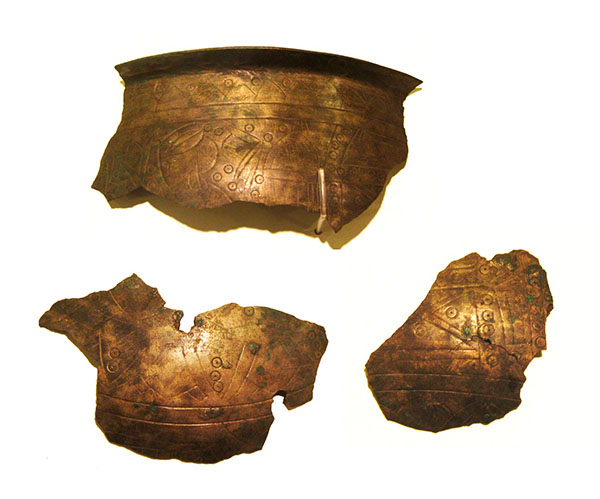The Three-Age System: A Struggle for Southeast Asian Prehistoric Periodisation
DOI:
https://doi.org/10.26721/spafajournal.v4i0.623Keywords:
the three-age system, ระบบสามยุคAbstract
This article explores the concept of the “Three-Age System” that has to some extent stymied the conceptualization of Southeast Asian prehistory. The direct transfer of this system from its European application to Southeast Asia has substantially influenced the analysis and characterization of Southeast Asian data. In particular, the chronological division of ‘Bronze Age’ and ‘Iron Age’ has overemphasized the linkage between the development of metal technology in relation to socio-economic development. It is agreed that absolute chronology needs to be established, however the terminology of ‘Bronze Age’ and ‘Iron Age’ should be used specifically for the classification of artefact chronology, separately from the explanation of stages of social organisation. Archaeological data from west-central Thailand will be discussed to demonstrate the issue of the incompatible framework of the Three-Age System (Figures 1-2). The apparent absence of clear age subdivisions and the lack of a “real” Bronze Age has made the chronology of this region seem incomplete. Stone tools had been abundantly used throughout the prehistoric period, and bronze and iron materials were often found at the same sites. However, little scientific data prior to 500 BCE has been obtained from any site in the region. This may or may not be the reason for west-central Thailand being considered peripheral in the discussion of the socio-economic development of mainland Southeast Asia. In consideration of these issues, archaeological methodology and the formation of knowledge from Southeast Asia prehistory will be discussed, including the necessity to move from the imported “Three Age System” to concepts that better fit the local data in west-central Thailand. The distorted prehistoric analysis needs to be adjusted so that our understanding of prehistory in Thailand does not become a scientific illusion.
บทความนี้เป็นการสำรวจและสะท้อนให้เห็นว่า “ระบบสามยุค” ที่ใช้ในการกำหนดอายุแหล่งโบราณคดีด้วยวิธีเทียบเคียงนี้ แทบจะกลายเป็นกรอบคิดในการศึกษาโบราณคดีสมัยก่อนประวัติศาสตร์เอเชียตะวันออกเฉียงใต้ ระบบการกำหนดอายุแบบโบราณคดียุโรปที่ถูกนำมาใช้ได้ส่งอิทธิพลต่อแนวทางการศึกษาโบราณคดีภูมิภาคนี้อย่างสำคัญ โดยเฉพาะอย่างยิ่งการกำหนดอายุ ‘ยุคสำริด’ และ ‘ยุคเหล็ก’ ที่มุ่งเน้นการศึกษาพัฒนาการด้านเทคโนโลยีโลหกรรมแล้วนำไปใช้อธิบายเชื่อมโยงกับพัฒนาการทางสังคม การลำดับอายุสมัยมีความสำคัญสำหรับโบราณคดีก่อนประวัติศาสตร์ก็จริง แต่การใช้ 'ยุคสำริด’ และ ‘ยุคเหล็ก’ ควรใช้ในลักษณะที่เป็นการจัดจำแนกประเภทโบราณวัตถุ แต่ไม่ควรนำไปผูกติดกับการอธิบายพัฒนาการทางสังคม ตัวอย่างที่จะนำมาอภิปรายในบทความนี้ก็คือ ข้อมูลโบราณคดีสมัยก่อนประวัติศาสตร์จากภาคตะวันตกของประเทศไทย โดยจะสะท้อนให้เห็นว่าการกำหนดอายุแหล่งด้วยระบบสามยุคทำให้เกิดความลักลั่นอย่างไร จากการเป็นภูมิภาคที่ไม่พบยุคสำริด ‘แท้’ ทำให้กลายเป็นว่าลำดับทางวัฒนธรรมของภูมิภาคไม่มีความต่อเนื่อง หลักฐานประเภทเครื่องมือหินพบมากมายในภาคตะวันตก ในขณะที่วัตถุประเภทสำริดและเหล็กพบเพียงบางแหล่งเท่านั้น แหล่งโบราณคดีในภูมิภาคนี้ที่กำหนดอายุทางวิทยาศาสตร์เก่าแก่กว่า 500 ปีก่อนคริสตกาลมีจำนวนน้อยมาก ซึ่งอาจจะเป็นเหตุผลหรือไม่ก็ตามที่ทำให้ภาคตะวันตกของไทยไม่ค่อยถูกกล่าวถึงในการศึกษาพัฒนาการเศรษฐกิจ-สังคมภาคพื้นทวีปเอเชียตะวันออกเฉียงใต้ ในการอภิปรายประเด็นดังกล่าวนี้ ผู้เขียนได้หยิบยกข้อมูลว่าด้วยพัฒนาการของวิธีวิทยาทางโบราณคดีและประวัติการสร้างองค์ความรู้เกี่ยวกับโบราณคดีก่อนประวัติศาสตร์ในเอเชียตะวันออกเฉียงใต้ รวมทั้งข้อคำนึงในการแสวงหาคำเรียกลำดับอายุที่น่าจะเหมาะสมกว่า ‘ระบบสามยุค’ เพื่อให้การศึกษาโบราณคดีก่อนประวัติศาสตร์สะท้อนความเข้าใจเกี่ยวกับอดีตของประเทศไทยอย่างแท้จริงโดยไม่กลายเป็นมายาคติทางวิทยาศาสตร์

Downloads
Published
How to Cite
Issue
Section
License
Copyright (c) 2020 SEAMEO SPAFA and Author

This work is licensed under a Creative Commons Attribution-NonCommercial-NoDerivatives 4.0 International License.



